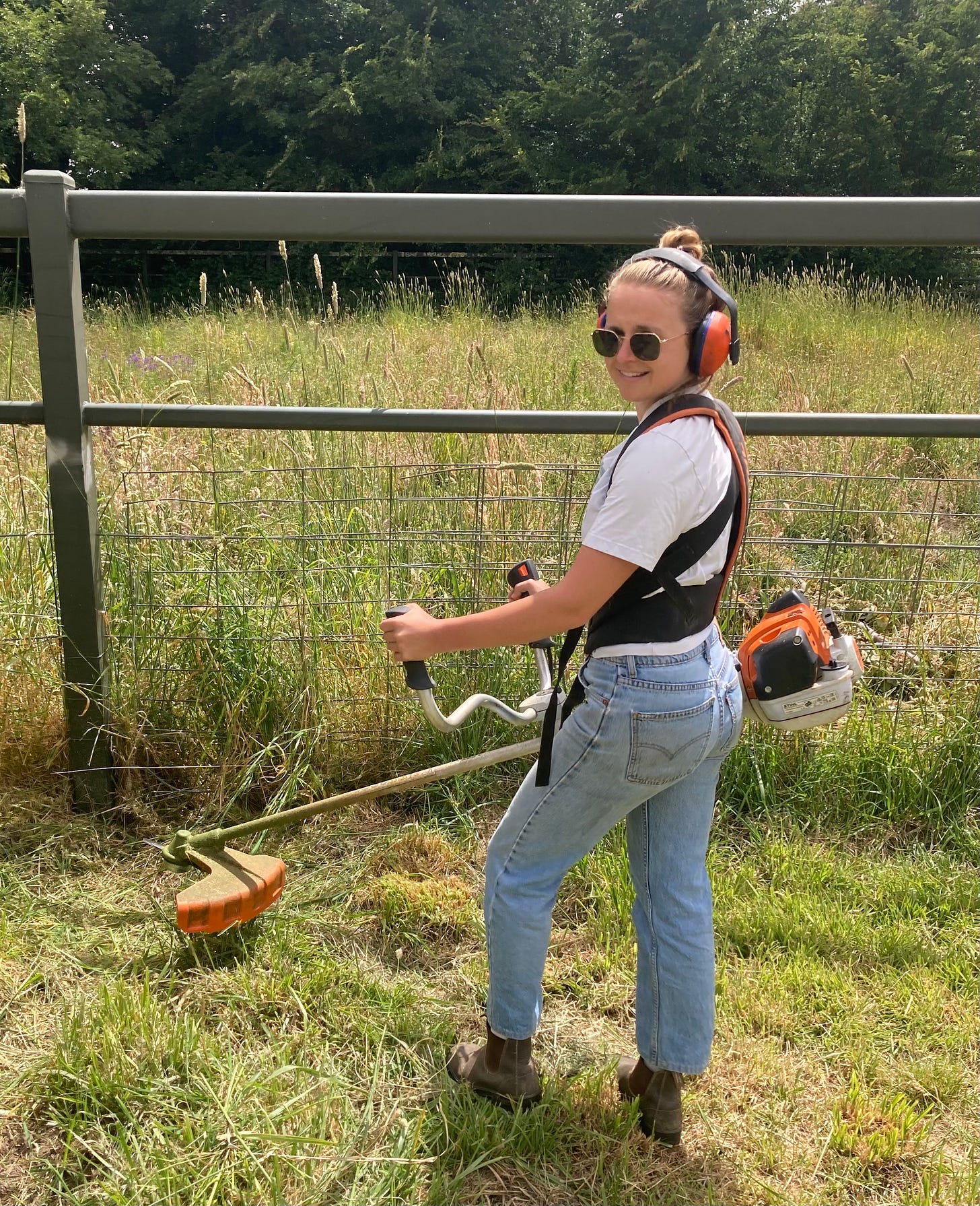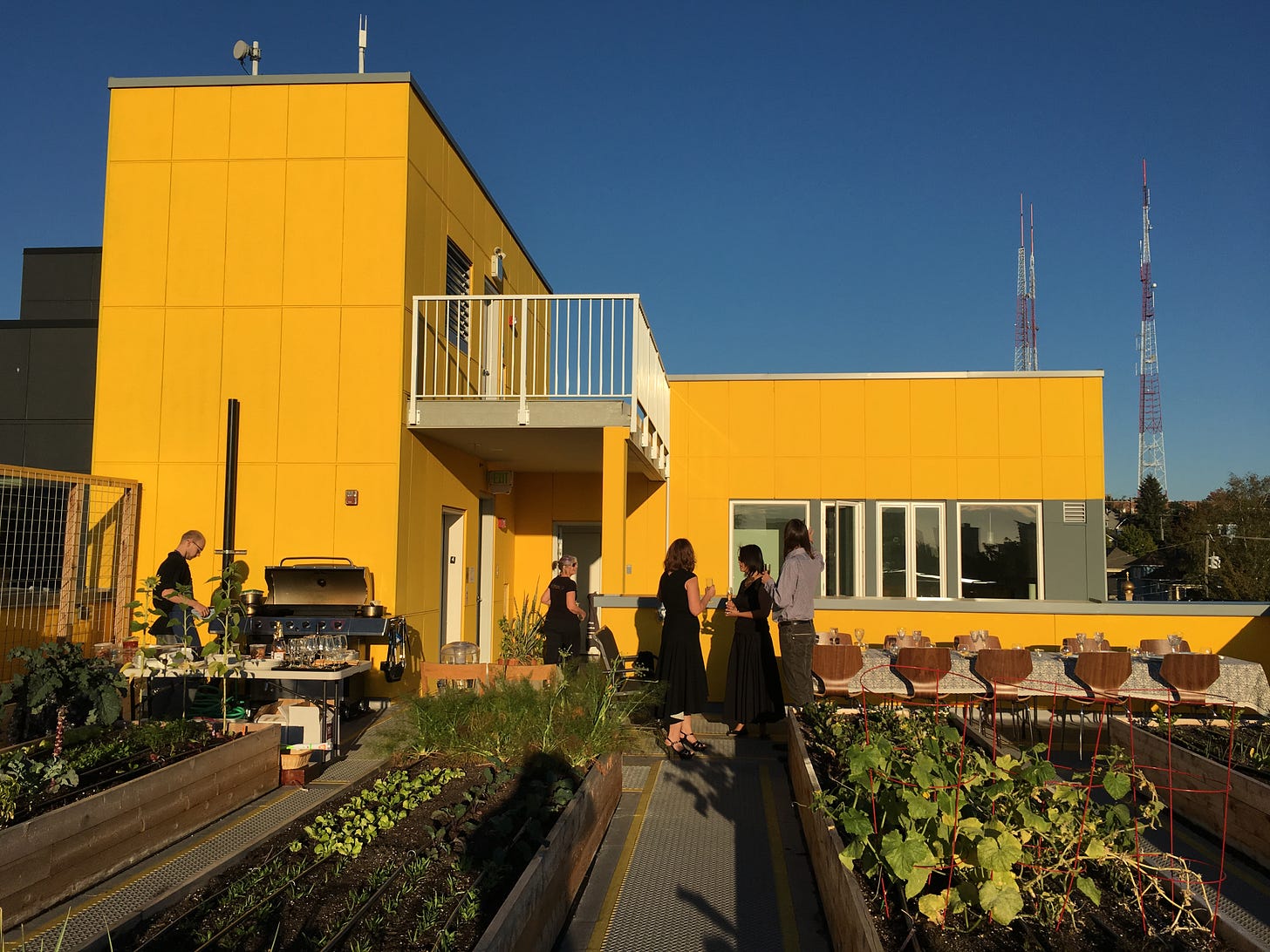When I was in Australia a few months ago, Andy and I would spend a few days a week on the farm my stepbrother Matt manages. We would help with odd jobs, tidy sheds, attempt (and fail) to keep wombats out of the veggie garden, and do lots and lots of whipper-snipping.
I loved being outside and doing something totally different to my usual laptop work. But what I loved the most was all the time I got to spend with Matt and his girlfriend, Bel. Bel and I would get up in the mornings and walk the dogs with her mum (who also lives on the property). We’d have a good brekky and maybe do some pilates. We would work a big day together, cook our meals together, chat and chat and chat.
It all worked so well that we’d joke about Andy and I nipping to London to grab our stuff, coming straight back, and setting up a commune. We even had a name for it!
Maybe I loved it so much because it wasn’t my whole life. After a few days, Andy and I would invariably head back into town, letting distance make our hearts grow fonder of the whole arrangement. Since then though, the idea of communal living has floated around my mind, and I keep stumbling upon examples of people testing it out in different ways and on different scales.
Words like commune, co-living, and collective might bring a few other C-words to mind: cult, communism, Kool-Aid (not a C, but you know what I mean). But with house prices getting more than a little overwhelming and loneliness ever on the rise, it’s kind of fun and freeing to imagine alternatives to how we live now.
On the more experimental end of the spectrum — and taking me on wild day-dreaming rides at the moment — is Robida, a collective based in the abandoned village of Topolò where the hills of northern Italy meet the Slovenian border. I first discovered these guys back in September when I visited the Slovenian Design Biennale in Ljubljana where they had done an installation on buckwheat. More recently, I’ve been digging a bit deeper into their other projects, like The Village as House, which has particularly caught my eye.
Over the past century, urbanisation and emigration have seen villages across Europe emptying out. According to Robida, there are over 3600 municipalities (half of all municipalities!) in Italy with fewer than 2000 residents. This includes Topolò, whose geography plonked it right in the middle of the World and Cold Wars, and whose population has gone from 400 at the beginning of the 20th century, to 23 today.
The Village as House project explores returning to places that were once lived in and now lie vacant, and caring for the heritage, environment, and community that these places could be home to once more. As they say themselves:
To take up residence in houses which are empty but already there, to not consider expanding small houses in answer to contemporary necessities for bigger spaces, but to find this generosity of space in other empty buildings functioning as common rooms, to use the paths of the village (which in Topolò are only dedicated to pedestrians since cars are parked in a shared parking place at the entrance of the village) as hallways of one shared house – all of this means to critically confront the capitalist credos of development, expansion, commodity, incessant growth. Dare not to dream big, but to maintain; not to innovate but to repair, not to start anew but to take care of what already exists.
It’s a concept that considers solutions to the issues of abandonment that Italian and wider European villages have been facing, whilst also highlighting the power of collaboration, commonality, reciprocity, and shared knowledge. Tools that have historically been, and could again be, central to the smooth-running of harmonious human lives.
To find more urban and perhaps more accessible examples, I turned to The Ideal City, a book by research and design studio SPACE10. With an entire chapter dedicated to shared living, it spotlights places and projects that encourage a sense of togetherness. They included case studies from all over the world but my favourite is a project by Seattle-based architects Schemata Workshop.
Capitol Hill Urban Cohousing is a “five-story mixed-use building comprising nine homes of varying sizes, situated around a central courtyard.” Each of the apartments has its own kitchen and living room, but there are also communal spaces that residents share, like a large-scale kitchen, a 30-person dining room, a rooftop garden, and laundry facilities.
What I like about this example is that privacy is built into the system so that people aren’t constantly on top of each other, while the shared spaces and joint commitment to the management of the building allow for a sense of kinship and support.
But how have these initiatives worked in the past? Just last night, I was talking to my friend Britt about my plans for this newsletter, and she told me about a housing project that shared certain qualities with the Capitol Hill example but also had a key difference. In the early 1980s, Amsterdam had some issues with affordable housing, so a group of women set out on a radical experiment in urban living, building a communal house in the centre of Amsterdam where everything was shared. It was called Kollontai.
Ultimately, the project flopped because the adult residents ended up not liking each other that much and sharing everything can wear a little thin. But in this short documentary about it, the narrator who lived there as a child sings its praises, calling it a living, breathing Wikipedia.
Perhaps the lesson learnt from the adult perspective here was not to jump into living with total strangers, and to be a little more selective about who to share a roof, kitchen, shower, food, and forks with. And that maybe shared living is better done in doses, like at Capitol Hill.
But not everyone has an abandoned village on their doorstep. Not everyone has the opportunity to buy or build a home that fits the needs of a bigger group. And not everyone wants to, either. I’ve just found it interesting to look at these more radical projects as inspiration for welcoming a little more community into our lives.
Scaled-down options could just be joining a community garden (I might write a whole newsletter about this!), getting to know your neighbours a bit better, or, as this Atlantic article suggests, moving within walking distance of your friends:
Doing so would likely involve a lot of effort on the front end, but the resulting community could pay emotional dividends for years. Meeting up would be a breeze if you didn’t have to travel as far to see one another. More than that, the proximity would make it easier to support one another materially and emotionally.
Something to think about, don’t you reckon? Let me know what you think!
See you in the next one,
Annabel










Brilliant stuff